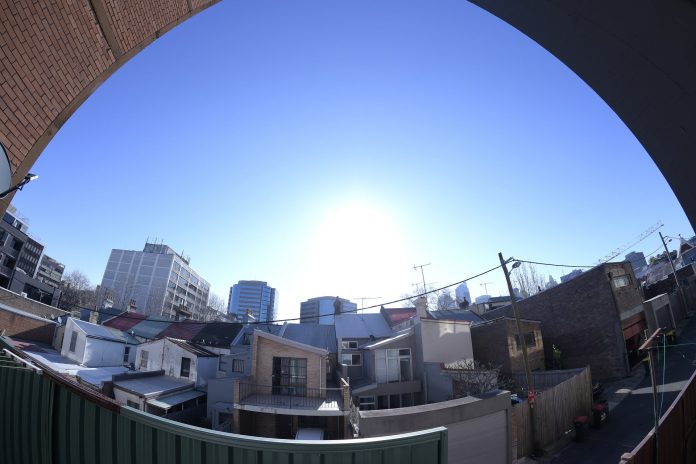For serious security applications would you use very wide-angle lenses on 1/3-inch cameras or not?
A very wide-angle lens on a 1/3-inch sensor camera will demand careful attention be paid to depth of field through the light cycle. Wide-angle lenses can include chromatic aberrations, vignetting, excessive barrel distortion and corner softness. And if you need identification, you really need the lens close to the subject.
Given the challenges of wide-angle views, we’d recommend you cover your operational target area fully but nothing more. For instance, a 130-degree angle of view might be include huge amounts of detail, but if a large part of that detail includes the walls adjacent buildings, the foliage of street trees and tens of degrees of empty sky, you’re better to opt for a narrower field of view with a higher concentration of pixels.
Something else operators need to manage with a wide-angle view is perspective distortion. When everything in a very wide, very deep scene is in focus, it can be challenging to ascertain scene context – depth of field and distance between objects are much harder to judge. When commissioning cameras with wide angle views, try to include a fixed foreground element within the first 5 metres as a DoF reference – for instance, a utility pole in a public space.
Wide angle lenses give great situational awareness and allow operators and investigators to follow unfolding events much more easily than they could with if jumping between 4 narrow angles of view. Something to consider if you need very wide views from a single camera point is a multiple head camera, which uses 2 camera heads to deliver 180-degree views of a scene without the challenges posed by significant distortion.
The latest multi-head cameras are exceptionally capable and deliver very low bitrates and virtually invisible stitching. You still need to be aware of overdoing the depth of field and that applies all the more when low light will be an issue. If that’s the case, think about wide angle IR arrays. It’s probably fair to say that under 8 lux you are pushing it to get face recognition much past 10-12 metres.
#securityelectronicsandnetworks.com









